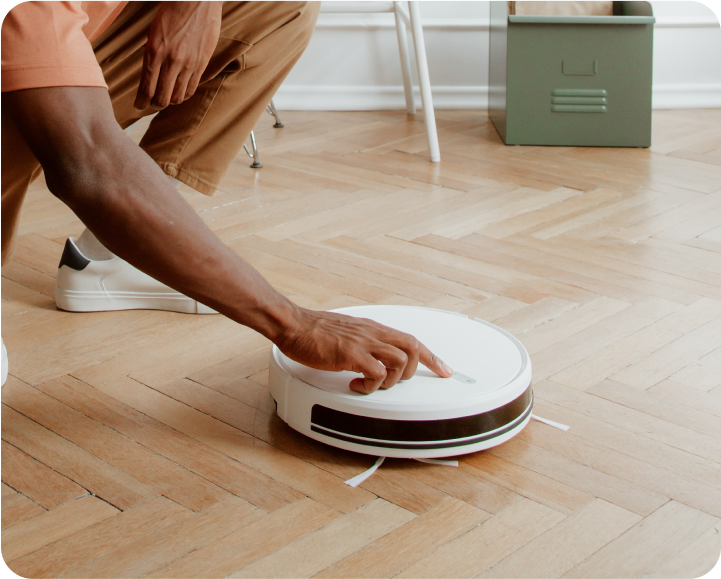AirQ Sensor
Measures and monitors air quality in homes, offices and businesses.
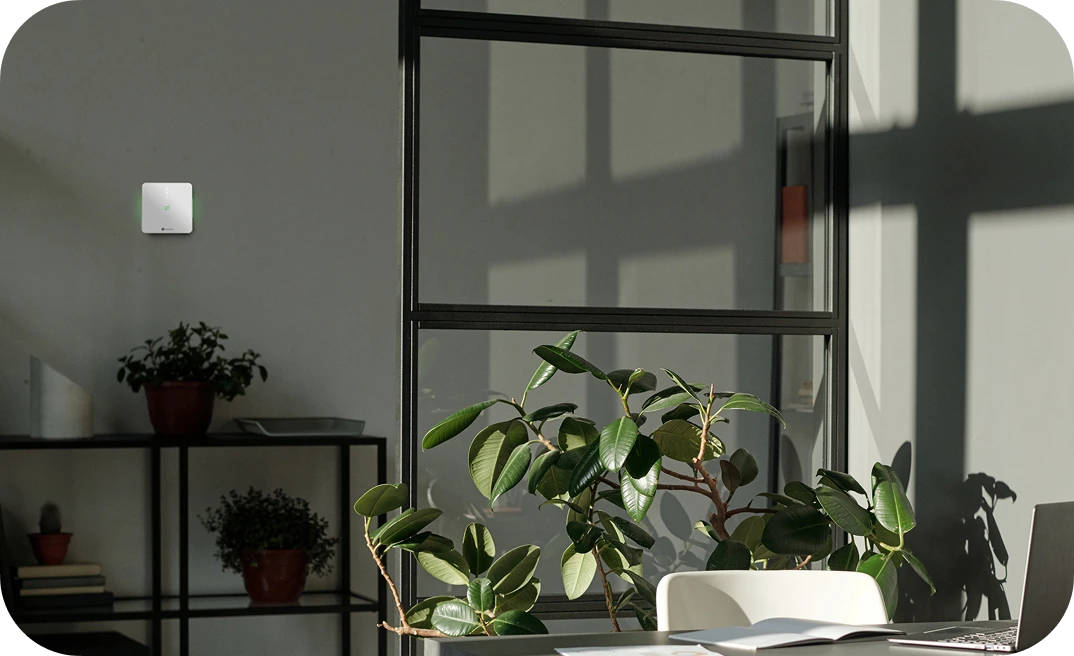

Most of us spend 90% of our time in enclosed spaces.

On average, the level of air pollution in these indoor spaces is five times higher than outdoors.

It is no easy task to identify the elements that determine indoor air quality because they are invisible.
Indoor Air Quality Variables
There are four variables that influence the quality of the air we breathe in an enclosed space and, therefore, our well-wellbeing:

CO2
Outdoors, CO2 concentration can range from 300-400 ppm (parts per million) and can reach values of up to 550 ppm in urban areas. The recommended concentration for enclosed spaces is 800 ppm. In a 30 m2 room with 10 people, this value is reached in 15 minutes1. A high concentration of CO2 cause concentration problems, decreased cognitive ability, headaches and dizziness.
CO2
CO2
PM10
PM10
PM2,5
PM2,5
VOC
VOC
AirQ Sensor: clean air, effortlessly
AirQ Sensor continuously measures the variables that influence air quality, calculates the Indoor Air Quality Index and, based on this value, activates the elements necessary for its improvement. This allows you to automatically guarantee the health and well-being of your family, customers and co-workers.
How is the Indoor Air Quality Index calculated?
The Indoor Air Quality Index used by AirQ Sensor is a customizable indicator displayed through a color scale.
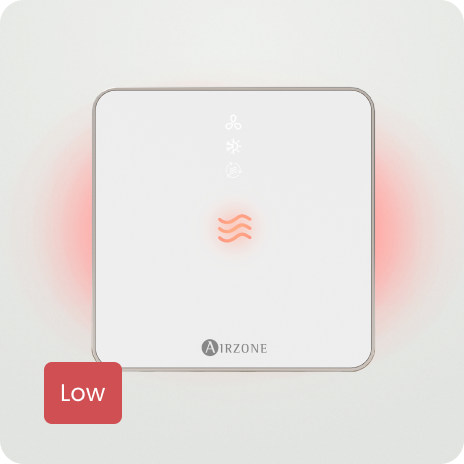
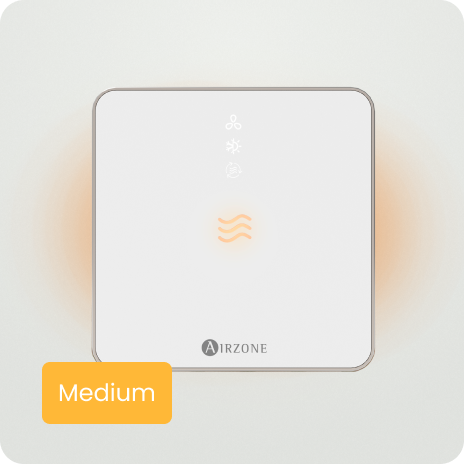
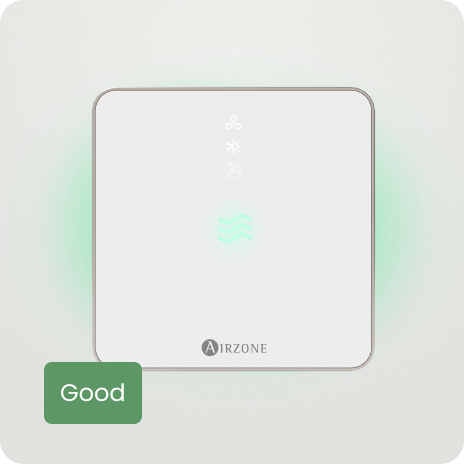
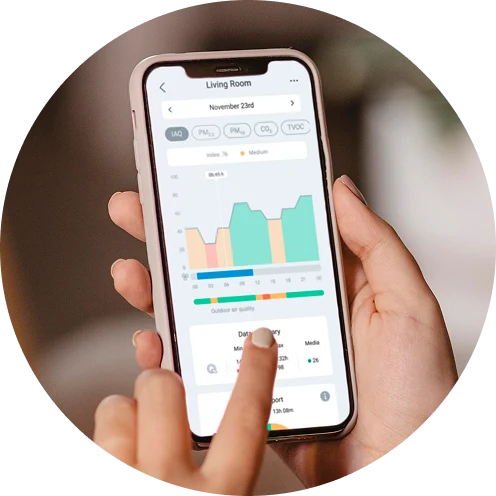
How AirQ Sensor improves air quality
When the indoor air quality index falls below the established value, AirQ Sensor can activate different elements to improve air quality.
- Ionization-based air purification: this technology is activated when PM2.5, PM10, and TVOC levels rise, removing harmful particles from the environment.
- Ventilation-driven air renewal: the ventilation units are activated when the CO₂ concentration in the air exceeds recommended thresholds.
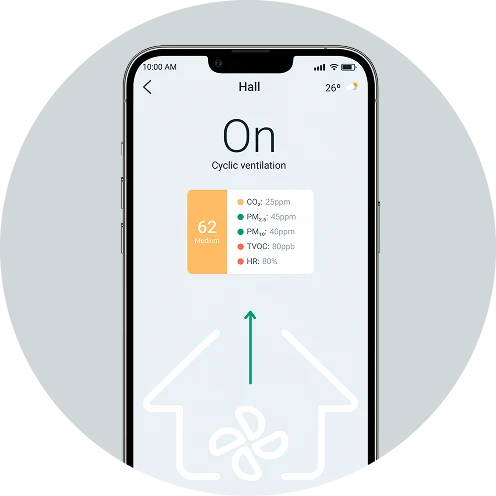
Ventilation unit control
Managing air conditioning, heating, and ventilation together improves the efficiency of each unit, providing seamless control over all components.
- Ventilation with free cooling: achieves the set-point temperature by introducing fresh outdoor air when its temperature is lower than the set-point temperature.
- Cyclic ventilation: automatically activates ventilation at predefined intervals, ensuring continuous air renewal and optimal indoor air quality.
- Humidity-controlled ventilation: triggers ventilation when humidity levels fall outside the user-defined range.
Solutions for air quality measurement and control
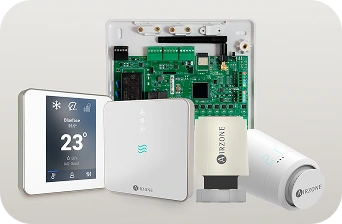
Flexa 25 Plus
Our open system integrates AirQ Sensor to provide all-in-one HVAC management.
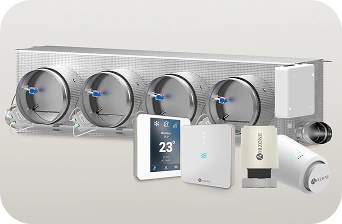
Easyzone 25 Plus
Our Plug&Play solution, Easyzone 25 Plus, includes AirQ Sensor as a key component to ensure comprehensive HVAC management.
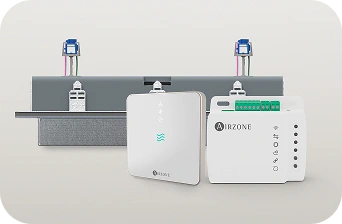
Aidoo Pro
AirQ Sensor is fully compatible with Aidoo, enabling real-time air quality monitoring and synchronizing air conditioning and ventilation units.
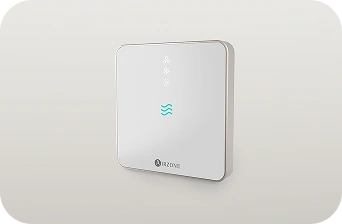
AirQ Sensor Wi-Fi
AirQ Sensor operates autonomously, continuously monitoring air quality and automatically controlling ventilation units when CO2 levels exceed safe thresholds.
